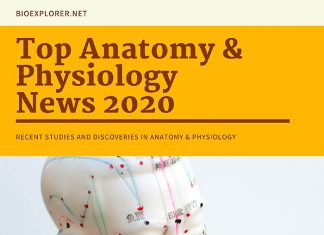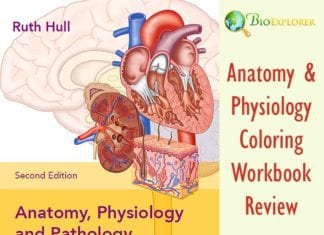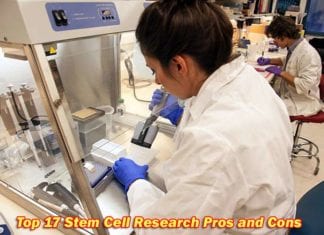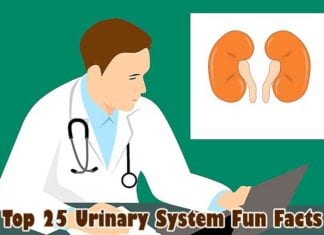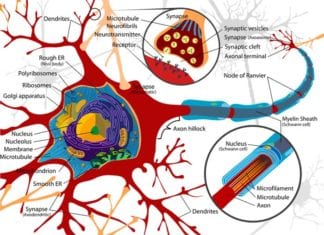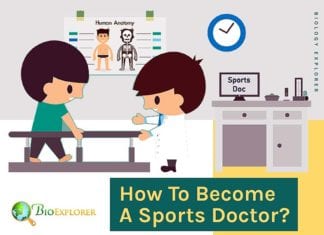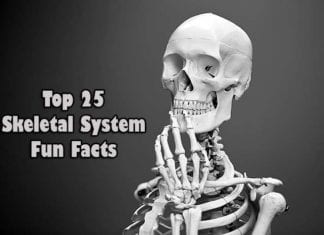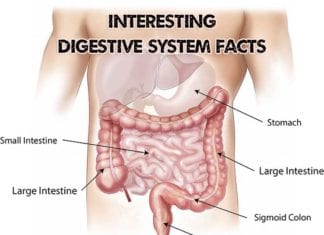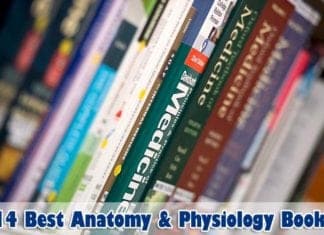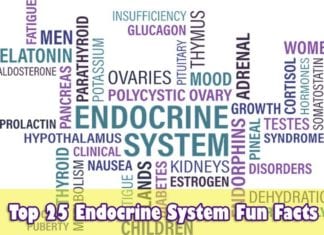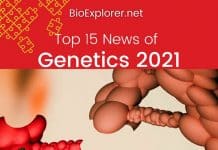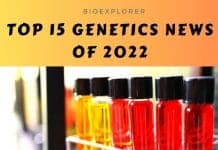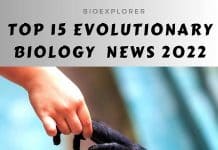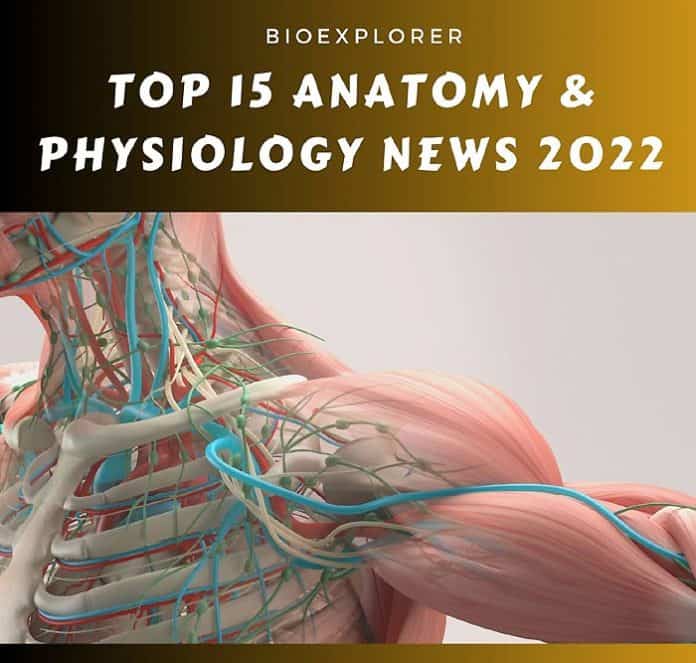
Anatomy And Physiology News of 2022: In 2021, the fields of anatomy and physiology experienced groundbreaking developments, unveiling new layers of complexity within the human body.
The advancements have set the stage for a new era of medical understanding, from cutting-edge techniques that revealed previously undiscovered cellular structures to novel insights into the brain’s functions and the connections between organs. These discoveries are not just enriching our knowledge but are paving the way for innovative treatments and interventions.
As we look forward to 2022, the anticipation builds for what the next chapter in anatomy and physiology will uncover. Stay tuned as the journey into the human body unfolds in unprecedented ways.
Table of Contents
- Top 15 Anatomy & Physiology News
- 1. Scientists successfully transplant human liver after treating it in a machine for three to cure injury (Switzerland, May 2022)
- Top 10 Anatomy/Physiology News in 2020
- 2. Plug-and-play organs on a chip that can be modified for the patient have been created by researchers (USA, April 2022)
- Top 15 Anatomy & Physiology News In 2019
- 3. Alzheimer’s disease is seen from a different perspective thanks to the human olfactory mucosa cell model (Finland, Feb 2022)
- 4. Scientists discovered that X-rays might be used as both a tumor-fighting tool and an immune system booster (Germany, April 2022)
- Top 26 Anatomy & Physiology News in 2018
- 5. A recent study describes how astronauts’ brains are affected by prolonged space travel (USA, May 2022)
- Top 27 Biology-themed Movies
- 6. Research shows that organoids made from stem cells resemble human parathyroid tissue (USA, Oct 2022)
- 7. Targets to stop irreversible kidney damage have been identified through research using human kidney organoids (USA, April 2022)
- 8. Piezo1 and cholesterol are connected surprisingly throughout brain development (USA, April 2022)
- 9. Recent research reveals the importance of lifelong exercise to maintain healthy muscles (USA, March 2022)
- 10. Study reveals that human skin sensory neurons are critical for pigmentation (Japan, Sep 2022)
- 11. To study cell activities, researchers have built a “nano-robot” made entirely of DNA (France, July 2022)
- 12. According to a new study, mealtimes can be predicted by the human body (UK, Feb 2022)
- 13. Researchers discover a biomarker for depression and the response to antidepressants (USA, Jan 2022)
- 14. Research shows that changes in diet starve cancer cells, overcoming resistance to therapy (USA, Nov 2022)
- 15. Study reveals startling discovery about the capacity of the adult brain to recover eyesight (USA, Oct 2022)
Top 15 Anatomy & Physiology News
1. Scientists successfully transplant human liver after treating it in a machine for three to cure injury (Switzerland, May 2022)
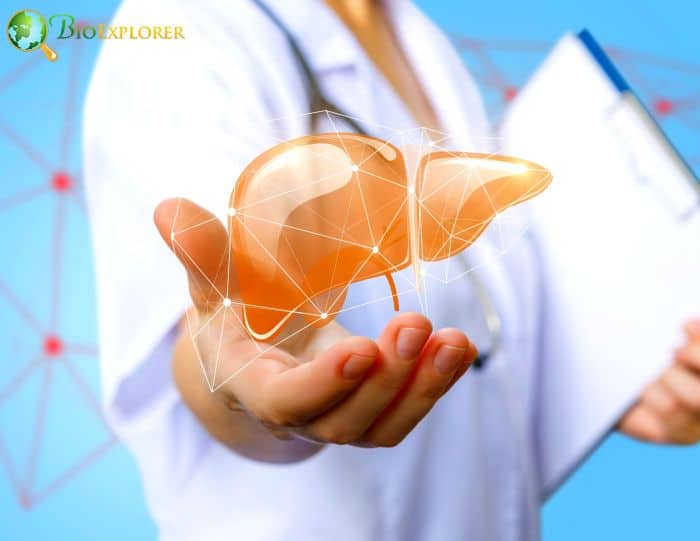
An initially injured human liver was successfully treated in a machine for three days outside the body by a multidisciplinary scientific team, who then implanted the restored organ into a cancer patient.
- The ability to implant a human organ into a patient after three days of storage outside the body is due to the study team’s internally designed perfusion machine. The machine closely resembles the human body, giving the human liver the best possible environment.
- An oxygenator replaces the lungs, a dialysis machine acts as the kidneys, and a pump acts as a replacement for the heart. Various hormone and nutrition infusions also carry out the functions of the pancreas and gut.
- The gadget moves the liver in time with breathing, just like the diaphragm does in the human body. The scientists used a variety of medications to prepare the liver in the machine.
- This allowed the liver, initially rejected for transplantation due to its poor quality, to be improved into a good human organ. Antibiotic or hormonal therapy, for instance, or the enhancement of liver metabolism, are made possible by the organ’s multi-day perfusion or mechanical circulation.
- Long-lasting laboratory or tissue testing can be performed without being rushed. Under normal circumstances, this is not feasible because organs can only be kept for a maximum of 12 hours when kept in perfusion machines and on ice.
- A few days after the transplant, the patient was able to leave the hospital and is presently doing well.
The therapy demonstrates that reducing the lack of functional human organs and saving lives by treating livers in the perfusion machine is possible. The project’s next step is to examine the method on other patients and present evidence of its effectiveness and safety as a multicenter study. If it is successful, liver transplantation-which is typically an emergency treatment-will eventually be able to be planned as an elective procedure.
Suggested Reading:
Top 10 Anatomy/Physiology News in 2020
2. Plug-and-play organs on a chip that can be modified for the patient have been created by researchers (USA, April 2022)
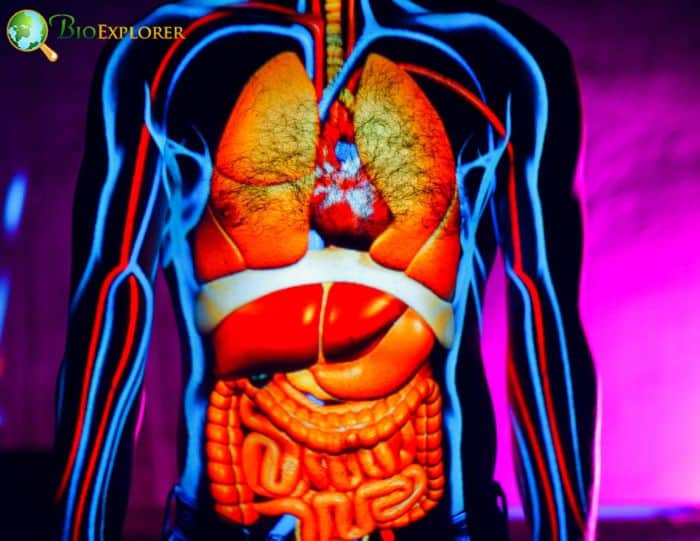
Artificial tissues are essential to disease modeling, drug safety, and human efficacy testing. Using several created tissues that can physiologically connect to represent body functions and systemic disorders has proven difficult.
A plug-and-play multi-organ chip that can be personalized for the patient has recently been developed by researchers, which can answer all these issues.
- Researchers claim to have created a multi-organ chip that mimics the functioning of multiple interdependent human organs.
- The chip comprises an engineered combination of heart, bone, liver, and skin. These components are connected through a network of blood vessels allowing immune cells to circulate within. The researchers have developed the organ plug-and-play chip, which’s about the size of a microscope slide and can be tailored to meet patient requirements.
- Scientists have spent ten years conducting hundreds of experiments, investigating countless brilliant concepts, and creating numerous prototypes. They have now created a framework that effectively captures the biology of internal organ interactions.
- The researchers have created a tissue chip system that mimics the communication between organs in the body. They connected heart, liver, bone, and skin tissue modules through a recirculating flow.
- The researchers chose these tissues to thoroughly test the suggested methodology since they have distinctly different embryonic origins and structural and functional characteristics and are negatively impacted by cancer treatment medicines.
- To emulate how human organs are connected within the body, they decided to connect the tissues by vascular circulation while keeping each specific tissue niche required to maintain its biological fidelity.
The research team is currently utilizing versions of this chip to study the safety and effectiveness of medicines well as the spread of breast and prostate cancers, leukemia, the impact of radiation on human tissues, the effects of SARS-CoV-2, on the heart, lungs, and blood vessels and the consequences of heart and brain ischemia.
For further biological and medical research, the group is also creating an easy-to-use, standardized chip for academic and clinical laboratories.
Suggested Reading:
Top 15 Anatomy & Physiology News In 2019
3. Alzheimer’s disease is seen from a different perspective thanks to the human olfactory mucosa cell model (Finland, Feb 2022)

Alzheimer’s disease is a fatal, long-lasting condition for which there is neither a cure nor a workable treatment. Thus, novel human-based strategies are required to comprehend and treat the pathophysiology of the disease. A new cell model for Alzheimer’s disease has been created and defined by researchers.
- This model is extremely beneficial for research and may aid in the early detection of the disease and testing of potential new treatments.
- Over several years, the researchers collected nasal samples from patients with Alzheimer’s disease and those who were cognitively well.
- The researchers used a potent single-cell RNA sequencing technique to characterize the patient-derived cells of the olfactory mucosa, which are found in the upper portions of the nasal cavity after tissue processing.
- The olfactory receptor neurons project to the brain, and the olfactory mucosal tissue is essential for the sensation of smell. The nasal cavity’s cells are compromised in people with Alzheimer’s disease, according to this novel technique.
- Transcription changes are seen, and these patient-derived cells’ activities are compromised. It has been postulated that viruses and airborne contaminants enter the brain through the olfactory mucosa.
- The latest findings from the study may, in the future, offer crucial insight into why a significant number of Alzheimer’s patients experience smell disturbances early in the disease’s etiology.
This unique study model mimics human physiology and is extremely helpful in enabling in-depth analysis of disease mechanisms that may result in discovering new drugs.
Suggested Reading:
Best Anatomy and Physiology Coloring Workbook Review
4. Scientists discovered that X-rays might be used as both a tumor-fighting tool and an immune system booster (Germany, April 2022)
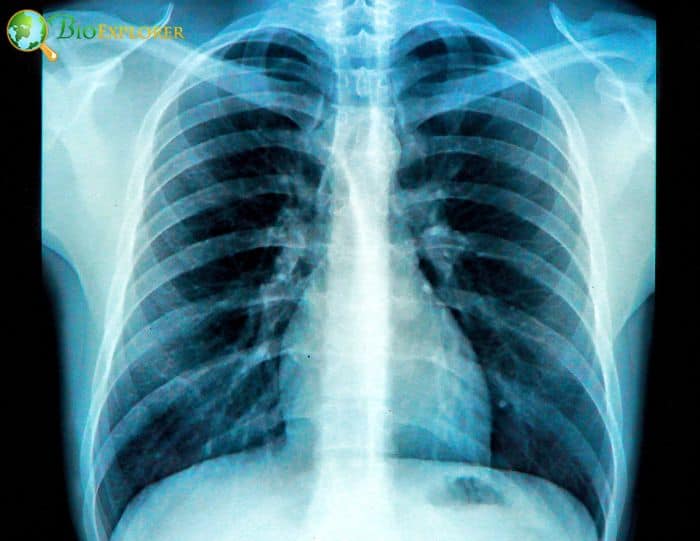
Radiation therapy is a tried-and-true method for eliminating tumors. But it will likely be able to do even more in the future, like simultaneously boosting the immune system and intensifying the battle against cancer.
- Ionizing radiation effectively kills tumor cells during cancer treatment. In the twenty years, it has become clear that when radiation therapy is combined with methods to stimulate the system, it could potentially enhance the effectiveness of treatment even further.
- According to the study, when T-cells are exposed to X -rays, the immune system is directly stimulated, as was intended. They have shown in the study that exposure to clinically relevant X -rays in T cells results in the release of the messenger molecule calcium (Ca2+) from internal storage, which starts a signaling cascade typical of an immune response.
- A transcription factor is translocated from the cytoplasm into the cell nucleus due to the activation of what is known as store-operated Ca2+ entry (SOCE), which causes the concentration of Ca2+ in the cells to oscillate at a certain frequency.
- Once there, this transcription factor starts gene expression, which causes the cell to start producing chemicals like cytokines crucial for the immunological response.
- Since the blood cells in the target tissue are always affected when tumors are exposed to radiation, medicine could benefit from the stimulation that X -rays have on T lymphocytes.
The researchers’ long-term goal is to improve cancer treatment through their investigations. It could be possible to use ionizing radiation to boost the immune system’s response and increase the killing power of radiation on tumor cells.
Suggested Reading:
Top 26 Anatomy & Physiology News in 2018
5. A recent study describes how astronauts’ brains are affected by prolonged space travel (USA, May 2022)

According to new research, prolonged space travel changes the fluid-filled gaps along the veins and arteries in the brain.
- To conduct the study, 15 astronauts had their brains imaged before and after lengthy stays on the International Space Station. Before launch and again right after their return, scientists measured the perivascular space, or the area around blood vessels, in astronauts’ brains using magnetic resonance imaging.
- They also repeated the MRI measures one, three, and six months after their return. Images of the perivascular space in the 16 earthbound control individuals’ brains were compared to those of the astronauts.
- They discovered an increase in the perivascular spaces within the brains of first-time astronauts when comparing before and after photos. Still, no differences were identified in astronauts who had previously served aboard the earth-orbiting space station.
- It demonstrates that veteran astronauts may have achieved some equilibrium. Despite the abnormalities observed in the perivascular regions of the astronauts’ brains, researchers never saw any issues with balance or visual memories that may point to neurological deficiencies among astronauts.
These discoveries benefit those on Earth with disorders that impair cerebral fluid circulation and those who wish to understand the basic changes during space travel.
Suggested Reading:
Top 27 Biology-themed Movies
6. Research shows that organoids made from stem cells resemble human parathyroid tissue (USA, Oct 2022)
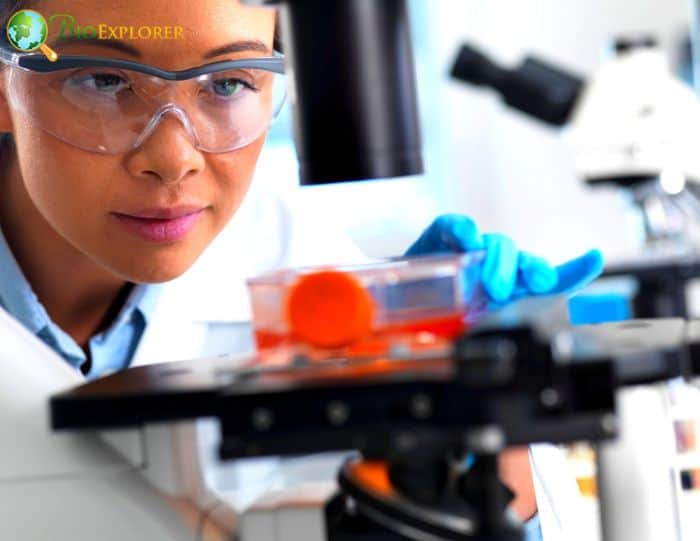
According to a study, patient-derived parathyroid organoids (PTOs) may open the door to future physiology research and drug screening applications. The study introduces the PTO as a fresh approach to studying parathyroid disorders.
- Changes in the excretion of parathyroid hormone, which result in aberrant blood calcium concentrations, characterize parathyroid disorders.
- Researchers have demonstrated the ability of the parathyroid gland to manufacture organoids.
- These organoids can create hormones, express particular markers, and exhibit similar responses to medications as the patient’s illness does. This work aimed to create a patient-derived PTO model that accurately represents human parathyroid tissue.
- The researchers collected human benign hyperplastic parathyroid tissue from patients having parathyroid surgery. They took parathyroid stem cells out of the tissue and looked at their capacity to develop into PTOs.
- The PTOs closely resembled the tissue at both protein levels. Further research revealed that hormone secretion was influenced by variations in calcium levels and the use of medications that lower hormones.
- Also, the scientists discovered particular parathyroid-targeted tracer uptake in the PTOs. Together, the findings show that these organoids could simulate the functionality of the human parathyroid.
- According to the functional testing and tracer experiment results, the PTOs are a very good model that resembles functional parathyroid tissue.
- To explore the function of these organoids in a real animal model, the researchers intend to transplant these organoids into hypo parathyroid rat models.
Future imaging tracers and medications that target the parathyroid can be tested using these organoids. Less animal testing is necessary when employing organoids. Moreover, this procedure could be used to develop healthy parathyroid gland organoids to treat individuals with hypoparathyroidism.
Suggested Reading:
Top 17 Stem Cell Research Pros and Cons
7. Targets to stop irreversible kidney damage have been identified through research using human kidney organoids (USA, April 2022)
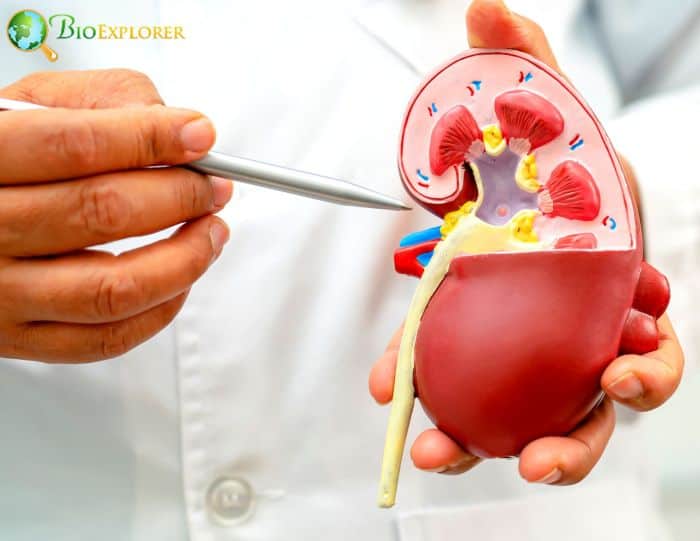
The ability of the kidneys to heal themselves after damage varies, but a switch from such intrinsic repair to inadequate repair that results in irreparable damage and chronic renal disease can happen (CKD). Scientists learn that a substance known as SCR7 promotes DNA repair to stop irreversible tissue damage and the advancement of chronic kidney disease.
- Recently, a research team employed kidney organoids, which resemble miniature kidneys created from human stem cells, to pinpoint genes crucial for preserving good kidney repair.
- The Chemotherapeutic chemical cisplatin, which can harm the kidneys, was applied to human kidney organoids. The treatment changed the expression of 159 genes and 29 signal pathways in kidney cells undergoing intrinsic repair.
- Numerous genes they discovered, such as FANCD2 and Rad51, were turned on during intrinsic repair. Still, their expression decreased as kidney damage became irreversible.
- When DNA is broken inside cells, these genes produce proteins that repair it. The results found in the kidney organoids were verified by additional studies using human kidney biopsies and mice models of kidney damage.
- Lastly, using a cisplatin-induced organoid injury model, the researchers discovered a therapeutic candidate known as SCR7 that aided in maintaining FANCD2 and RAD51 activity to rescue normal tissue regeneration and stop the progression of CKD.
The research may help identify novel CKD prevention or treatment targets. This is a groundbreaking study in human kidney organoids, and it could help develop CKD treatments.
Suggested Reading:
Top 25 Urinary System Fun Facts
8. Piezo1 and cholesterol are connected surprisingly throughout brain development (USA, April 2022)
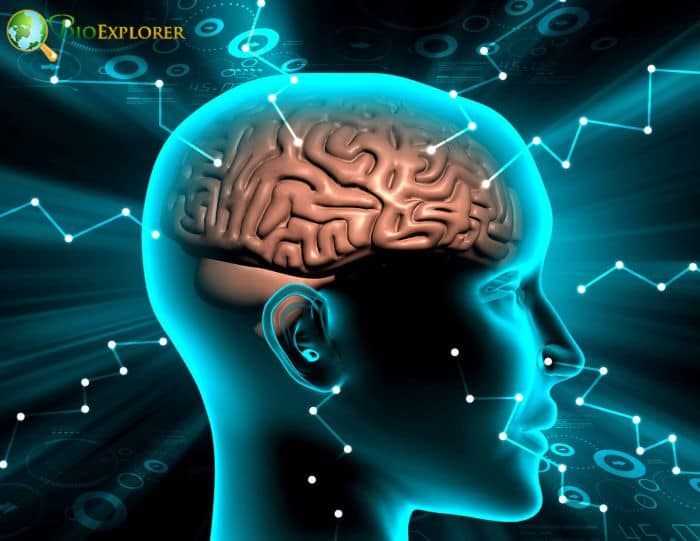
A new study has discovered a link between Piezo1, a mechanically activated ion channel, and the cholesterol levels inside neural stem cells during neural development. Additionally, this study sheds light on how mechanical forces and the mechanics of tissues impact the shape and structure of the developing brain.
- The study results show that Piezo1 is involved in the neurodevelopmental process that controls cellular cholesterol metabolism to modify cell number, quality, and arrangement.
- The finding that Piezo1 and cholesterol are related spurs research into Piezo1 in neurodegenerative conditions like Alzheimer’s disease related to cholesterol homeostasis.
- We can create new remedies for some of these disorders by therapeutically regulating Piezo1 activity. It has previously been discovered that neural stem/progenitor cells originating from the human fetal brain activate Piezo1 channels in response to internal and external mechanical stresses.
- The recent study demonstrates the significance of Piezo1 for healthy brain development.
- A novel relationship between Piezo1 and cholesterol production was found through the research, opening up new avenues for research into how mechanical forces affect lipid metabolism in the brain.
Poor brain development can result in abnormalities and functional problems that last a lifetime. This discovery offers fresh perspectives for comprehending how brain problems may originate, even if we still do not fully comprehend the causes of many brain developmental defects.
Suggested Reading:
Top 38 Fun Facts About The Nervous System
9. Recent research reveals the importance of lifelong exercise to maintain healthy muscles (USA, March 2022)
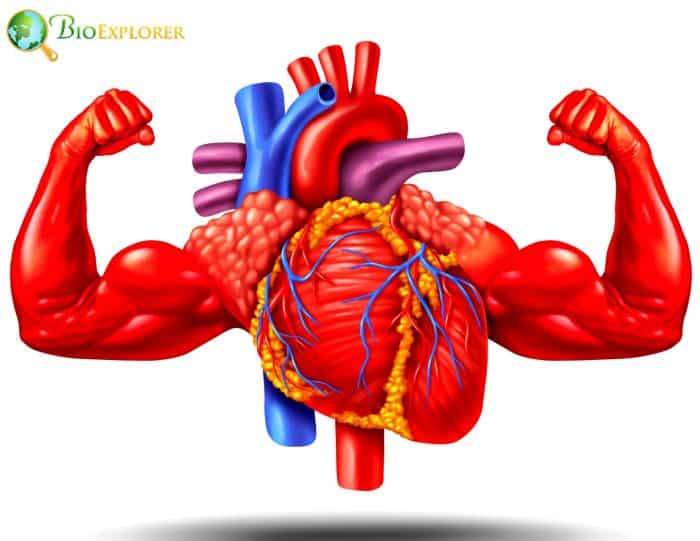
According to new research, lifelong physical activity may offer protection against age-related decreases in muscle mass and function.
- Compared to inactive people of all ages, those 68 and older who were physically active throughout their lives have a muscle that ages healthier, performs better, and is more fatigue-resistant.
- This research is the first to examine human muscle, stem cell, and nerve activity. The researchers discovered that older people who maintain physical activity throughout their adult lives-whether through strength exercise, ball games, racket sports, swimming, cycling, jogging, and rowing-have more satellite cells, which are muscle stem cells.
- These cells guard against nerve deterioration and are crucial for long-term growth and muscle repair. There were 46 male participants in the study.
- Young passive (15), elderly lifetime exercise (16), and elderly sedentary were the three groups into which they were split (15).
- To test the effectiveness of their muscles, they engaged in a strenuous resistance exercise while seated in a mechanical chair. It measured how much force was generated. Blood samples were collected, and muscle biopsies from both legs were examined.
- The researchers discovered that older persons who had always exercised outperformed older and younger sedentary adults. The whole aging population benefits from exercise, according to the study.
The most important takeaway from this research is that, in terms of preventing age-related loss in muscular function, even a little activity goes a long way. This positive discovery may encourage more people to partake in a hobby they enjoy.
Suggested Reading:
How To Become A Sports Medicine Physician?
10. Study reveals that human skin sensory neurons are critical for pigmentation (Japan, Sep 2022)
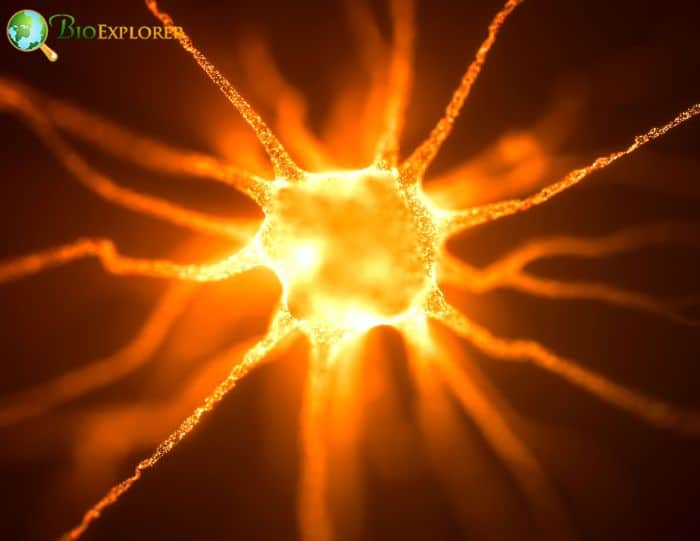
Japanese researchers have found that the sensory nerve cells in our skin serve more purposes than simply allowing us to feel our way around. The study team has discovered that sensory neurons are crucial for the physiology and pigmentation of human skin.
- Melanin, a class of chemicals generated by skin cells called melanocytes, plays a role in some cases of skin pigmentation. Pigmentation disorders are caused by increased or decreased melanin synthesis due to damaged or fewer melanocytes.
- Researchers looked into the interaction between sensory neurons and melanocytes. They discovered that skin color patch tissue had more contact than control tissue. Melanocytes were also discovered to have stronger pigmentation and a higher survival rate when cultivated with neurons.
- Melanocytes specifically exhibited greater survival and longer dendrites (branch-like extensions of the cell) when cultivated in growth conditions conditioned with sensory neurons.
- The team also discovered proteins released by sensory neurons, such as Repulsive Guidance Molecule B (RGMB). It was found that RGMB promotes melanocyte survival and blackness.
- According to the study, sensory neurons influence human melanocyte characteristics by secreting RGMB, a vital melanocyte stimulant.
By enabling the identification of hitherto unidentified molecules and mechanisms, including RGMB, the findings of this study may facilitate the development of novel medications for use in conjunction with existing therapies for various pigmentation disorders.
Suggested Reading:
Albino Ferrets
11. To study cell activities, researchers have built a “nano-robot” made entirely of DNA (France, July 2022)
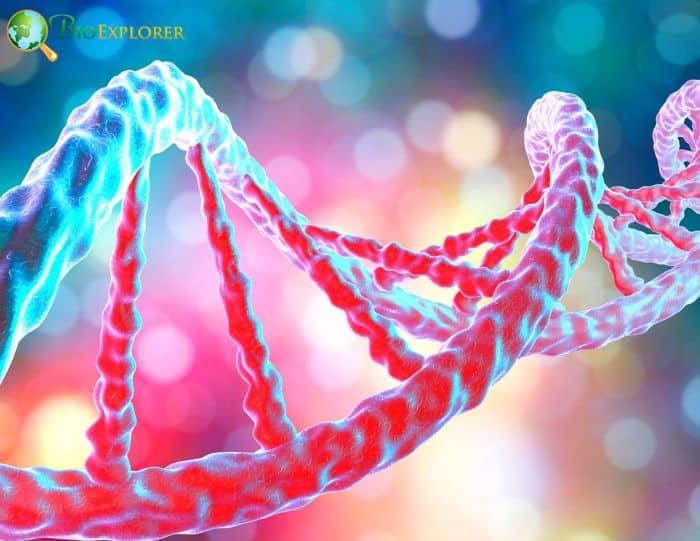
The forces exerted on our cells at a level generate important biological signals involved in disease development and our bodies’ normal functioning. These sensors, known as mechanoreceptors, are sensitive to touch. Also, contribute to the regulation of essential biological processes. We must further enhance our knowledge about the molecules for cell mechanosensitivity.
- The research team utilized a method called DNA origami to propose an approach. This technique enables the utilization of DNA molecules, as the elements, for constructing 3D nanostructures that autonomously arrange themselves into a shape.
- As a result, the scientists were able to create a “nano-robot” that is compatible with the size of a human cell and is made up of three DNA origami structures of nanometric size.
- It’s a breakthrough that allows us to apply and manipulate a force with a precision of 1 piconewton, equivalent to one trillionth of a Newton.
- This is the first time a self-assembled DNA-based item created by humans can exert force with such precision. The team started by attaching a mechanoreceptor-recognizing molecule to the robot.
- Applying forces to particular mechanoreceptors located on the surface of the cells to activate them allowed us to direct the robot to some of our cells.
A tool like this is helpful for basic research since it can be used to learn more about the molecular processes underlying cell mechanosensitivity and identify new cell receptors responsive to mechanical stimuli.
Suggested Reading:
Top 25 Fun Facts About The Skeletal System
12. According to a new study, mealtimes can be predicted by the human body (UK, Feb 2022)

According to research, the human body can predict the timing of frequent meals. The study team also discovered that meal size and timing may affect daily blood glucose oscillations.
- Circadian rhythms are 24-hour cycles of physiological changes, including metabolic alterations typically timed to environmental cues.
- Humans frequently experience hunger at the same time each day. Still, it is unknown to what extent our biology can anticipate mealtimes. The regularity of meals may ensure that we eat when our bodies are best prepared to handle them.
- Circadian rhythms help metabolic cycles align with meal patterns. To discover more, an eight-day laboratory study with stringent sleep-wake schedules, exposure to light-dark cycles, and dietary restrictions was conducted on 24 male subjects.
- Twelve people ate little meals every hour while awake for six days, whereas the other participants had two major meals each day.
- In a strategy known to show innate circadian rhythms, all subjects were placed on the same eating schedule for 37 hours after the first six days.
- Throughout the trial, glucose levels were assessed every 15 minutes. Hunger levels were assessed hourly during the waking hours of days 2, 4, and 6 in the initial stage of the study and then hourly for the subsequent 37 hours.
- After analyzing the data from the first six days, researchers discovered that participants in the little meal group had higher glucose concentrations in the morning and throughout the day.
- Similar increases in glucose concentration were observed in the large meal group upon awakening; however, there was a gradual reduction before the first meal.
- After waking up for the first time during the final 37 hours, when both groups had identical little meals hourly, every individual showed an initial increase in glucose concentration.
- While participants who always had small meals hourly saw their glucose levels rise, those who had previously gotten two large meals saw their glucose levels start to fall before the anticipated large meal (which they did not receive).
The human body is rhythmically wired to anticipate mealtimes, especially when food is not easily accessible, according to the study. This shows that eating at particular times is more than just a psychological habit for some people since their bodies have been programmed to expect meals.
Suggested Reading:
Top 25 Fun Facts About The Digestive System
13. Researchers discover a biomarker for depression and the response to antidepressants (USA, Jan 2022)

A blood test that offers a straightforward biochemical characteristic for depression and assesses the effectiveness of medication therapy in specific patients is one step closer to being created, according to researchers.
- Human platelets include a biomarker that measures the severity of depression, according to researchers.
- The study expands on earlier work by some researchers that demonstrated depression is correlated with diminished adenylyl cyclase, a tiny chemical produced by the cell in response to neurotransmitters like serotonin and adrenaline.
- These findings were made in both human and animal models. Adenylyl cyclase levels are reduced during depression.
- The intermediary protein, Gs alpha, which enables the neurotransmitter to produce adenylyl cyclase, is trapped in a lipid raft. In this cholesterol-rich membrane matrix, it performs poorly, which is why adenylyl cyclase is attenuated.
- The biological biomarker for Gs alpha translocation from lipid rafts has been discovered in recent work.
- A blood test can be used to find the biomarker. What has been created is a test that, using a single biomarker, can detect depression and determine how well treatment is working.
The researchers predict that maybe one week after starting therapy, they can use this blood test to assess whether antidepressant medications are effective. Those who would get better would change because platelets fluctuate every week. The biomarker that should indicate a favorable outcome of treatment would be visible.
Suggested Reading:
14 Best Anatomy and Physiology Books
14. Research shows that changes in diet starve cancer cells, overcoming resistance to therapy (USA, Nov 2022)
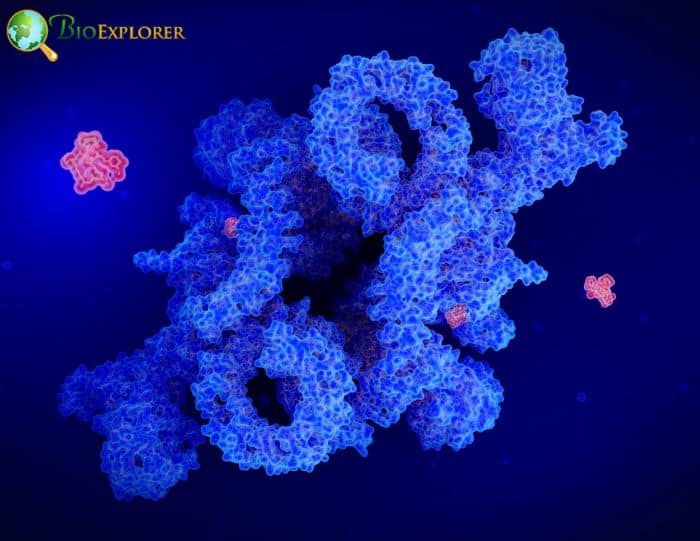
mTORC1 is one of a cell’s most significant nutrient-sensing molecules. The important question is whether colon malignancies use food-sensing pathways to turn on the mTORC1, even if it is known to be hyperactive in colon cancer.
- For cancer cells to survive and grow, they require nourishment. MTORC1 is a molecule within cells that plays a role in sensing nutrients. It allows cells to detect types of nutrients and promote their growth and replication, earning it the nickname of a “master regulator” of cell growth.
- When nutrients become scarce, cells decrease the cascade activity that senses nutrition and deactivates mTORC1.
- When the amount of nutrients in tumors shrinks in colon cancer, the cells are at a loss for what to do. They go through a crisis without the nutrients to grow, which causes a great deal of cell death.
- A low-protein diet was discovered to inhibit the nutritional signaling pathway that activates a master regulator of cancer progression.
- The regulator mTORC1 governs cells’ ability to grow and increase in response to dietary cues. This mechanism contributes to the development of resistance to cancer treatments. It is particularly active in malignancies that have specific genetic mutations.
- Via a complex termed GATOR, a low-protein diet, and a decrease in two essential amino acids, altered the nutritional signals. Together, GATOR1 and GATOR2 keep mTORC1 operational.
- A cell’s GATOR2 turns on mTORC1 when it has an abundance of nutrients. Low nutrition levels cause GATOR1 to shut down mTORC1. By limiting specific amino acids, this nutritional signaling is blocked.
- According to the study, restricting amino acids with a low-protein diet offers an alternate method of inhibiting mTORC.
- Also, they examined tissue biopsies from colon cancer patients, which revealed that high mTORC indicators were associated with worse outcomes and increased chemoresistance.
The only course of treatment would not be a low-protein diet. It must be paired with another treatment, such as chemotherapy. This notion of a therapeutic window to limit amino acids will be improved by further study. Also, researchers will investigate whether an inhibitor could prevent the GATOR complexes from forming and how these pathways lead to treatment resistance.
Suggested Reading:
Top 25 Endocrine System Fun Facts
15. Study reveals startling discovery about the capacity of the adult brain to recover eyesight (USA, Oct 2022)

A fresh understanding of the brain’s potential is provided by finding how some visually handicapped adults could begin to see. Collaboration among researchers led to the discovery that inherited blindness may be partially reversed in the adult brain.
- The group looked into therapy options for LCA or Leber congenital amaurosis. The phrase describes a class of inherited retinal illnesses defined by significant birth vision impairment.
- The condition results in the breakdown or impairment of the cells in the retina. It is triggered by genetic mutations in over twenty-five different genes.
- Providing retinoids, which are chemicals that specifically target the retina, could potentially offer considerable advantages for children with LCA. The researchers from UCI were keen to investigate if this treatment could benefit individuals affected by this disorder.
- The treatment’s ability to rescue brain circuitry related to vision astounded the experts. There is more to seeing than just healthy, working retinas. It begins with the eye, from which messages are sent to every part of the brain.
- Visual perception begins in the brain’s core circuits. Until recently, scientists thought those signals had to be received during childhood for the brain’s core circuits to wire themselves properly.
- Adults, however, significantly improved the central visual pathway signaling, particularly in the circuits that handle input from both eyes.
Every time you make a discovery that deviates from your preconceived notions about the brain’s capacity for adaption and rewiring, you learn a more comprehensive idea. This new paradigm may aid the development of retinoid therapy to fully restore the central visual pathway in adults with this illness.
Suggested Reading:
Top 26 BEST Animals With Best Eyesight
This Anatomy & Physiology news series gives us a detailed overview of recent advancements. Commencing from organoid developments, multi-organ on chips, stem cell therapeutic applications, nano-robots to sense mechanical stimuli, etc. These key findings give way to more exciting news in 2023.
![]()


